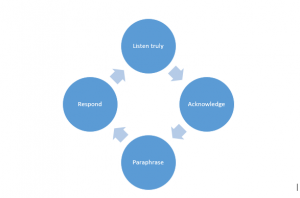- We as salesman need to ensure that customer chooses the option we would want him to choose.
But our option should not be pushed onto the customer. He should be able to make the decision
to go with our option with his own free will. - A great salesman is the one who can listen to the needs of the customer much more than speaking of his product line.
- A great salesman makes his impression by remembering the little things in a conversation with the customers along with the larger things in life. By taking notes during listening.
- For example would you not like a salesman who listen attentively and then suggest you the best option as per your suggestion?
- Please note if you understand this point well the author compliments on your new gained/recognized ability to impress any customer.
Introduction
This topic is for the professional who want to ensure a better conversion ratio.
Great sales people know how to convince the customer into a buying decision.
But inexperienced sales people make the mistake of trying to force customer into a particular product and not providing the choice to the customer.
Thus knowing to sell is critical but using the right strategy is also beneficial.
So offering the choices to people is essential to closing a sales.
But what choices should you offer and how will you make sure your options align to what the customer wanted.



 Author Suggests
Author Suggests

 Words of wisdom
Words of wisdom

